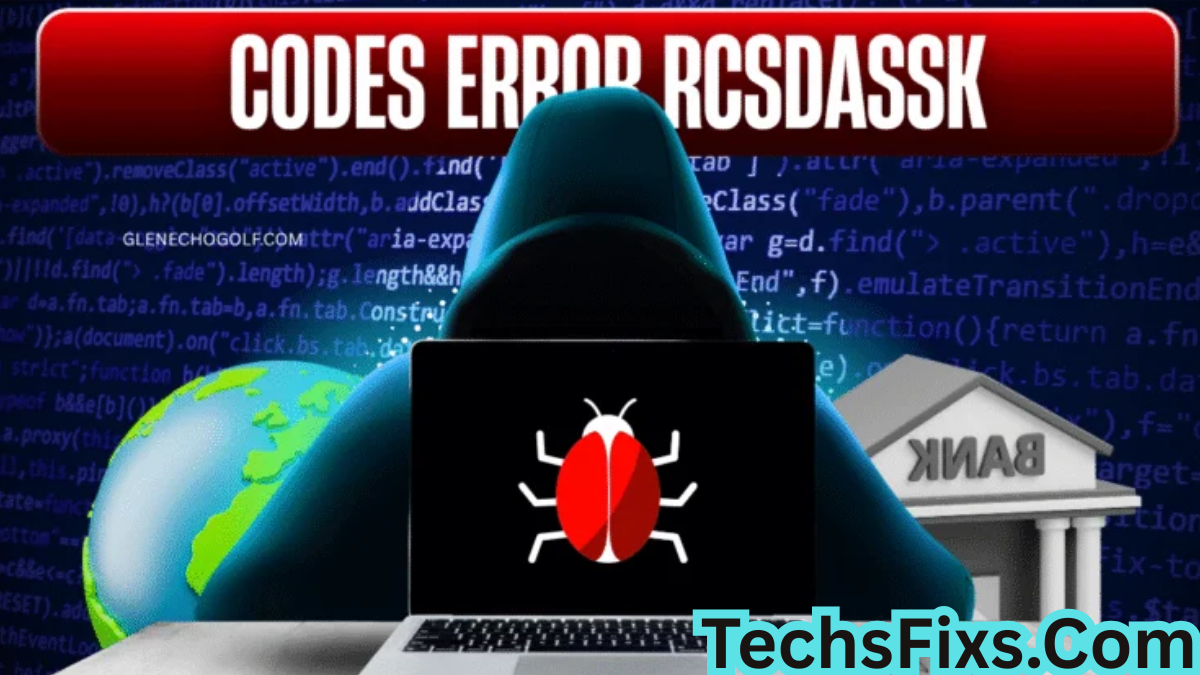Software Error RCSDASSK In the ever-evolving world of software development and system operations, encountering errors is part of the reality that developers, engineers, and users face regularly. Among these technical issues, some errors stand out due to their unusual behavior, frequency of occurrence, or lack of proper documentation. One such anomaly is the software error known as RCSDASSK. Though obscure in origin, RCSDASSK has sparked concern and curiosity among both professional IT communities and independent developers due to its sudden appearance across various platforms and systems. Understanding this error is key to diagnosing complex system failures and enhancing overall software resilience.
The Mysterious Nature of RCSDASSK
Software error RCSDASSK presents a puzzle for developers because it lacks official documentation and clear origin. Unlike typical errors that reference a known bug, missing dependency, or misconfiguration, RCSDASSK appears cryptic. It has been described by some in the developer community as potentially standing for “Recursive Configuration Stack Data Application System Shutdown Key.” While speculative, this breakdown provides a framework for analyzing the Software Error RCSDASSK causes behind the error. The reference to recursion and stack configuration suggests the issue lies deep within system memory or process loops that spiral out of control, forcing emergency shutdowns to protect data integrity or prevent hardware failure.
Where RCSDASSK Has Been Encountered
RCSDASSK has been reported in several digital environments, from enterprise resource planning systems and cloud computing platforms to isolated desktop applications and server-side middleware. This range of occurrences makes it difficult to isolate a single cause or common denominator. Reports have highlighted incidents in both Linux and Windows-based systems, suggesting the error may be linked more to application-level logic or architecture than to a specific operating system. Particularly vulnerable environments include those using legacy architecture, complex containerized services, or rapidly scaled microservices frameworks where configurations can easily conflict or overload the system’s processing capacity.
The Underlying Technology Factors
To understand RCSDASSK, it’s crucial to examine the technological factors that may contribute to its manifestation. Central to this error may be recursive function calls that do not resolve as expected. In software development, recursion refers to a function calling itself to solve a problem. While recursion is powerful, it requires a well-defined base case to terminate properly. Without this safeguard, recursion can spiral infinitely, exhausting the call stack, and resulting in what is known as a stack overflow. This leads directly to system instability, which is one of the suspected consequences of RCSDASSK.
Another potential contributor is mismanaged configuration stacks. In enterprise software or layered systems, configuration data often determines how different modules communicate and execute commands. A misconfigured stack, where one component passes corrupt or incompatible data to another, could result in system failure or forced shutdowns, especially if the software is unable to recover gracefully. RCSDASSK may thus emerge as a red-flag error triggered by a critical breakdown in data integrity or process communication.
Diagnosing the Error
Diagnosing RCSDASSK requires a methodical approach that begins with reviewing system logs, crash dumps, and recent system changes. Error logs can provide the timestamp, process ID, and exact module or line of code where the issue originated. This information is essential for tracing the error back to its root cause. A close inspection of configuration files and environment variables can also help detect inconsistencies, outdated parameters, or conflicting values that may be contributing to the error. Developers and IT specialists often use debugging tools and memory profilers to monitor how the software handles data during execution and to identify patterns that lead to stack anomalies.
Common Triggers Behind RCSDASSK
Although RCSDASSK is rare, several common triggers have been linked to its appearance. One notable cause is improper recursion management within the application code. This usually happens when a recursive function lacks a proper exit condition, leading to repeated calls until the stack memory is exhausted. Another contributing factor is the simultaneous execution of conflicting scripts or services, especially in environments where multiple APIs or modules run in parallel. Such competition for system resources can lead to unexpected behavior, including the RCSDASSK error.
Moreover, installing incompatible updates or third-party plugins without proper validation can lead to software corruption. Configuration files that are either outdated or misaligned with the current system version may create conditions under which RCSDASSK is triggered. Because the error is not isolated to one kind of software, it often reflects underlying issues within system design, deployment methods, or runtime behavior.
Short-Term Containment Methods
When the RCSDASSK error appears, immediate containment is essential to avoid wider system disruption. Isolating the application or service experiencing the error can prevent it from affecting other parts of the system. Rebooting the affected software environment can clear temporary memory issues or cache-related problems. Temporarily rolling back to a previous version of the software where the error was not present is another effective step, especially when recent updates are suspected to be the cause. If rollback is not an option, disabling or sandboxing features believed to be related to the error can provide temporary relief while deeper debugging takes place.
Preventing Future Occurrences
Preventing RCSDASSK in the future means addressing both the codebase and the system architecture. Developers must refactor recursive functions to include clear termination conditions, and to limit stack depth if necessary. Unit testing and integration testing should be part of the development pipeline to detect these conditions before deployment. Implementing static code analysis tools that can flag unsafe recursive logic or stack overflows will help identify vulnerabilities early in the development cycle.
In terms of system design, maintaining clean and version-controlled configuration files is essential. Configuration management platforms can help automate consistency across environments. Regular audits should be conducted to ensure software modules are compatible and free from redundant or deprecated components that may interfere with execution.
User Experience During RCSDASSK Incidents
For end-users, the RCSDASSK error can be disorienting. The error typically lacks user-facing explanation and may lead to abrupt application shutdowns or system restarts. Users facing this issue are often left without the means to troubleshoot or understand what went wrong, which can erode trust in the software. For this reason, applications should be designed to handle critical errors with informative messages that explain what happened and offer next steps or guidance.
Additionally, software vendors and support teams should document known issues like RCSDASSK in their knowledge bases, along with suggested workarounds or fixes. This transparency not only helps users navigate the problem but also builds credibility and fosters a better support experience.
Implications for Data Integrity and Security
When a critical error like RCSDASSK occurs, there is always a risk that unsaved data may be lost or corrupted. This is especially concerning in environments dealing with sensitive or real-time data, such as healthcare systems, financial platforms, or government databases. If RCSDASSK is triggered during a data write process, it could result in incomplete or malformed records.
Beyond data loss, the error could also expose systems to vulnerabilities. Some stack-related errors are exploited by malicious actors to execute arbitrary code or access restricted memory areas. While RCSDASSK has not been explicitly linked to any specific exploit, its characteristics indicate that it could be symptomatic of an underlying vulnerability. As such, any incident involving RCSDASSK should prompt a security review, including penetration testing and vulnerability scanning.
Community Collaboration and Technical Forums
The open-source and tech communities play an important role in addressing lesser-known errors like RCSDASSK. Online forums, developer communities, and technical documentation sites serve as platforms where users can share their encounters, observations, and solutions. These collaborative efforts can lead to the development of patches, plug-ins, or diagnostic scripts that help resolve or prevent the error. Participating in these communities also helps developers stay updated on new insights and recommended practices related to complex system errors.
The Future of Error Detection and Prevention
As software systems grow in scale and complexity, traditional error handling methods may no longer suffice. Emerging technologies such as machine learning and predictive analytics are being integrated into monitoring tools to detect anomalies before they escalate. These tools can learn from historical data to recognize the early signs of issues like RCSDASSK and automatically take corrective actions.
Moreover, the shift toward DevOps and continuous integration/continuous delivery (CI/CD) pipelines supports faster detection and resolution of errors. By integrating testing and deployment processes, developers can catch problematic code early and push updates more reliably. This not only reduces the risk of errors but also shortens the recovery time when issues like Software Error RCSDASSK arise.
Conclusion
Software error RCSDASSK may be mysterious in nature, but its impact is very real. It represents the convergence of recursive logic failures, misconfigured system data, and possibly hidden vulnerabilities in complex digital environments. Diagnosing and resolving this error requires a combination of careful debugging, system audits, user communication, and in some cases, community collaboration. By taking a proactive approach to software development, including better error handling, testing, and security practices, organizations can minimize the risk and severity of RCSDASSK. As technology continues to evolve, staying vigilant and adaptable is the best strategy for managing the ever-present challenges posed by software errors.




